Asphalt and bitumen tankers are specialized tankers designed for the carriage of liquified asphalt or bitumen at temperatures up to 250-260°C. This type of tanker is equipped with an independent tank and a powerful cargo heating system to maintain the required temperature of the cargo during transport.
Asphalt and bitumen are primarily transported to North and South America, the Caribbean, Africa, Europe, Asia, and Australia by these tankers, which are unloaded at special terminals equipped with a system of bitumen pumps and insulated pipelines.
As a rule, for the most part, asphalt/bitumen tankers are small vessels with a deadweight of 5,000 tons to 12,000 tons.
The length of the world’s largest asphalt/bitumen carrier, Asphalt Splendor, is 175.46 meters and the deadweight is 37,000 tons. This asphalt/bitumen carrier was built in 2015 by Avic Dingheng Shipbuilding Company in Yangzhou, China.
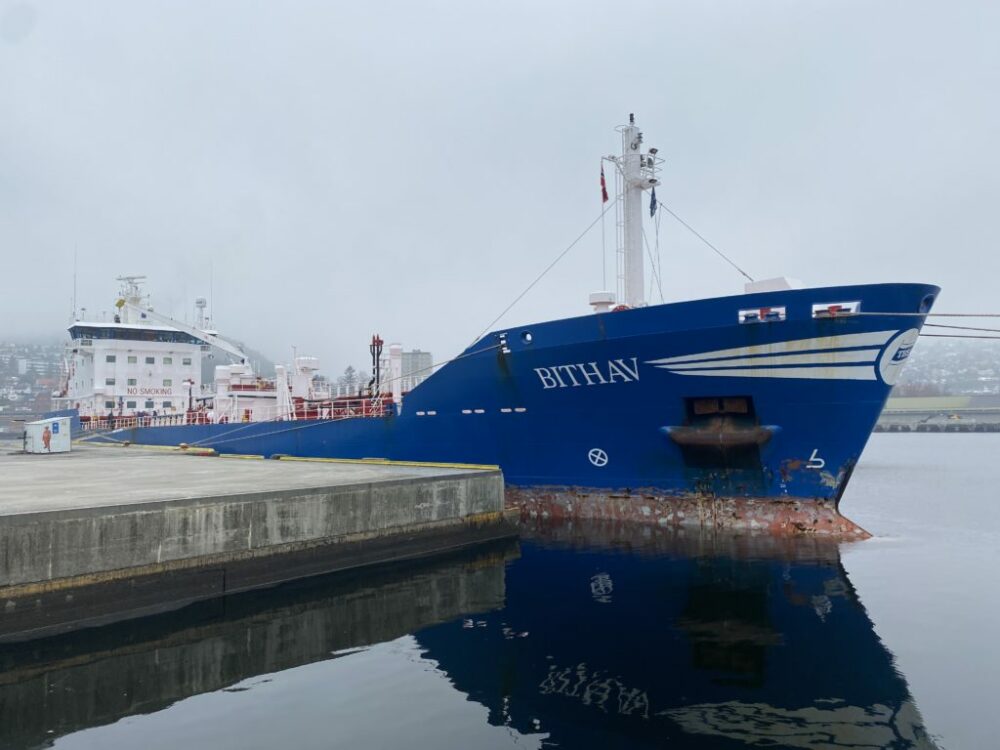
Bitumen is just about 5% of the asphalt mixtures, so production does not require big amounts of bitumen. Transportation by sea is mainly made from oil refineries to smaller oil terminals or oil depots from which bitumen is delivered to asphalt mixing plants.
However, in countries that do not have terminals for receiving asphalt tankers, the delivery of raw materials is carried out in special bitumen containers (tank containers) with a capacity of up to 20 tons, or unloading into bitumen tankers is organized right on the quay wall.
How are Asphalt and Bitumen Transported?
Bitumen is a black, sticky liquid with high viscosity or semi-solid, composed almost entirely of bitumen.
Depending on the bitumen grade transportation temperature is from 110°C to 170°C that must be maintained during the whole voyage and loading-discharging operations. That is why asphalt and bitumen tankers require significant power to maintain the temperature of the cargo on board during the voyage, especially during the winter periods and long voyages.
The cargo tanks, commonly consist of two blocks, a forward block of tanks and an aft block with four tanks respectively in each block and the pump room in between. Each tank block is only fixed in the middle and therefore able to move longitudinally, depending on the temperature. There is no structure inside the cargo tanks.
This type of tanker is normally equipped with cargo pumps of screw-type of 300-500 m3/h capacity depending on the deadweight and its design.
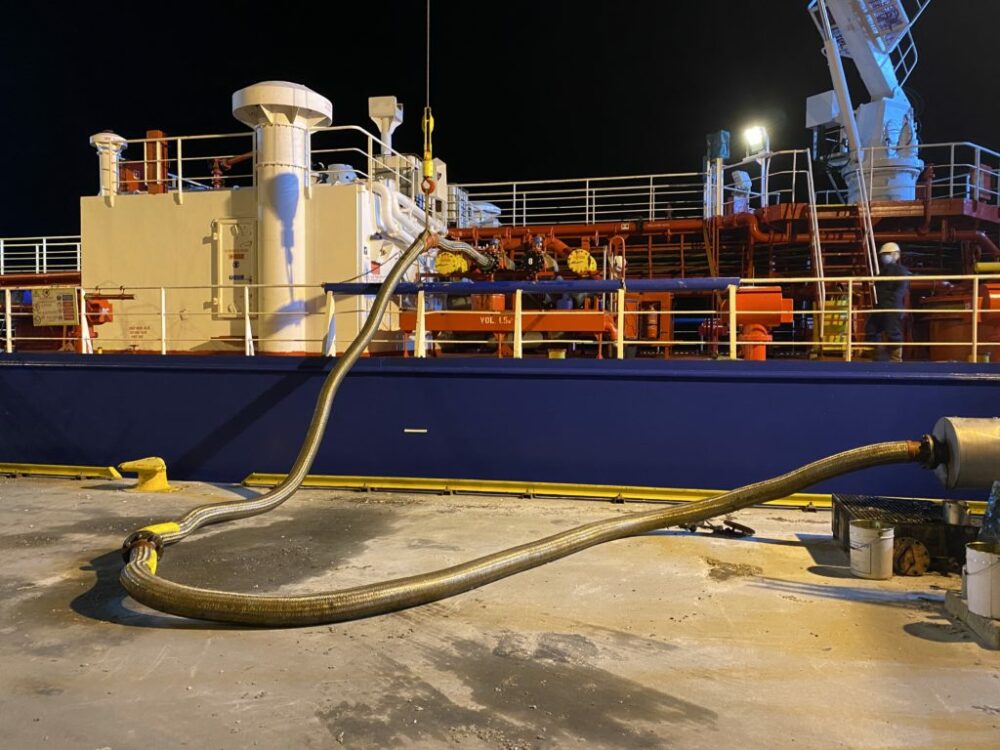
The heating medium used for cargo heating on asphalt/bitumen tankers is thermal oil at a maximum temperature of 250C. Thermal oil is circulated from boilers fired by heavy fuel oil with a capacity of 1,200,000 kcal/h in the engine room to heating coils located inside the cargo tanks. Each boiler can independently satisfy the entire need for cargo heating.
The heating arrangement is commonly made of two parts – bottom heating coils and tower heating coils. Bottom heating coils are similar to the arrangement used on oil product tankers. The tower heating coils are additional spiral coils in the center of the cargo tank of approximately 1 meter in diameter.
Even the asphalt/bitumen tankers are designed for the carriage of cargo up to 250°C, the vast majority of bitumen grades are transported at temperatures between 110 and 170°C, and just for some grades, the temperature is 200°C to be maintained during the voyage and operations.
Without continuous heating of the cargo, it can relatively quickly cool down and increase viscosity which will significantly harden cargo operations. The speed of cooling down will depend on external conditions but can be estimated at 1°C every 4 hours or 6°C per day.
Empty tanks are not heated during ballast voyages and cool down much faster – 5°C per 8 hours or about 15°C per day.
Bitumen tanks do not perform tank cleaning after discharging during the voyage to the next loading port. There are some differences in bitumen grades, but still, it is a widespread practice to load cargo on top. Due to the nature of the cargo carried by bitumen tankers, it is common that a vessel has some amount of cargo remaining in the ship’s tanks. The ship’s crew reports on board quantity (OBQ) or to a loading master and surveyor in the port of loading. The same happens in the port of discharge, but the cargo remaining is reported in the ROB report or the Remaining On Board quantity report.
This happens due to the high viscosity of the cargo, increasing with lowered temperatures. Despite the absence of inner constructions of the cargo tanks, bitumen sticks to sidewalls. Tank cleaning requires a special procedure for tank cleaning on asphalt/bitumen tankers that is normally avoided. Preparing the ship for drydocking is performed every 5 years. Tanks are normally just cooled down to normal temperatures and well-ventilated to gas-free conditions.
What Is An Independent Tank In A Ship?
Independent tanks are self-supporting tanks that do not form a part of the ship hull and are not essential to the hull strength. Independent tanks are widely used on gas carriers and lately on asphalt/bitumen tankers.
There are three categories of independent tanks: type A, type B, and type C (pressure vessels).
On chemical and product oil tankers these tanks are used for the carriage of bitumen and asphalt solution with the difference that insulation minimizes heat loss and reduces thermal stress in the ship’s hull structure as they are completely insulated. Independent tanks can expand from the high temperatures of the transported raw materials.
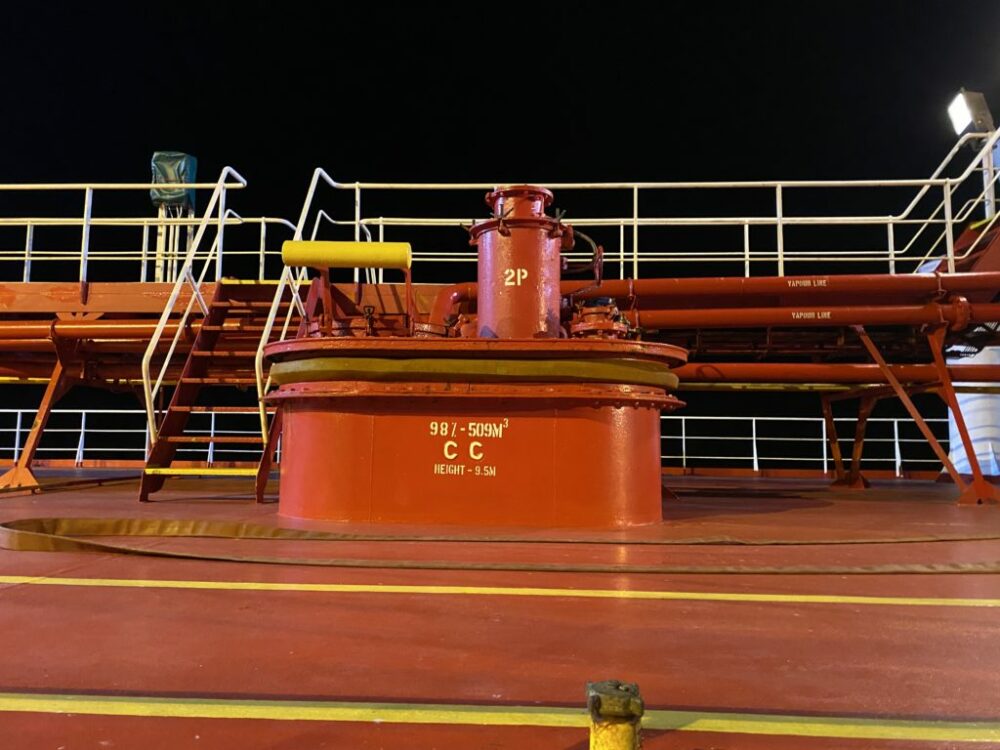
Since independent tanks do not have a strong connection with the ship hull, can expand and total weight includes the weight of tank construction and cargo itself, they require a more complicated system. This type of tank is laying on a system of supports with wooden bearing pads allowing them to move in case of expansion and limiting heat transfer to ship hull construction.
Void space between independent tanks and the ship’s hull, called void space is filled with insulation material – mineral or stone wool insulation.
Void spaces are hidden from the mariner’s eyes and require regular inspection for cracks in wooden bearing pads, sliding support of sides, and leakages from tanks to insulation.
Independent tanks become the dominant ship`s design for bitumen tankers and by the classification notation of the American Bureau of Shipping (ABS), this type of tanker has the notation A1 Asphalt Carrier with Independent Tanks (temp℃) with corresponding maximum temperature permitted in tanks.
What Are The Biggest Asphalt/Bitumen Tanker Owners?
Swedish shipowner Tarbit Shipping AB has been transporting bitumen, chemical, and petroleum products since 1947. Today the company’s main office is located near Skärhamn harbor and is owned by the Hermansson and Svanström families.
Now their fleet consists of 15 asphalt/bitumen carriers: MT Bit Hero, MT Bit Eco, MT Bituma, MT Bitfjord, MT Bitonia, MT Bitland, MT Stella Maris, MT Stella Orion, MT Bit Redo, MT Stella Virgo, MT Bit Force, MT Bit Power, MT Bitflower, MT Bihav, and MT Stella Polaris.
A Swiss-based family-owned group of companies, ABC Maritime A.G. operates a fleet of tanker ships. Their fleet of asphalt/bitumen ships consists of MT San Bacco and MT San Biagio.
Dutch company Vroon B.V. based in Breda operates a huge fleet of 120 vessels mostly consisting of offshore-support vessels, livestock carriers, product carriers, and car carriers. Their fleet includes also 12 asphalt/bitumen tankers or as reads their fleet list – high-heat tankers.
Today Iver Ships operates 12 bitumen tankers: MT Iver Ability, MT Iver Bitumen, MT Iver Ambition, MT Iver Accord, MT Iver Action, MT Iver Balance, MT Iver Beauty, MT Iver Best, MT Iver BlessingG, MT, Iver Bright, MT Iver Brilliant, MT Iver Ambassador.
Pritchard-Gordon Tankers is one of the fully integrated British tanker-owning and operating companies with a head office in Sussex.
Desgagnés is a Canadian group operating a fleet of tankers, cargo vessels, passenger and cargo carriers, Ro/Ro, and tugboats among which is an MT Damia Desgagnes a next-generation dual fuel bitumen tanker.
None of the above is even close to the top 10 of the largest oil tanker companies. This is because bitumen transportation is a relatively small market and this specialized fleet takes just a small part of the world’s fleet both by the number of ships and their total deadweight.
Key Takeaway:
- Bitumen tankers are specialized vessels designed for transporting liquified asphalt or bitumen at high temperatures.
- Essential components include independent tanks and powerful heating systems to maintain cargo temperature.
- The primary regions served by these tankers are North and South America, the Caribbean, Africa, Europe, Asia, and Australia.
What is an asphalt/bitumen tanker vessel?
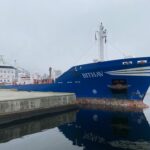
An asphalt/bitumen tanker vessel is a specialized tanker designed for the carriage of liquified asphalt or bitumen at temperatures up to 250-260°C. This type of tanker is equipped with an independent tank and a powerful cargo heating system.
How are asphalt and bitumen transported?
Asphalt and bitumen are mainly supplied to various regions by asphalt-bitumen tankers, which are unloaded at special terminals equipped with a system of bitumen pumps insulated pipelines, and shore tanks with heating. Bitumen can also be transported in special bitumen containers or tank containers with a capacity of up to 20 tons or unloaded into bitumen tankers organized right on the quay wall.
What is an independent tank in a ship?
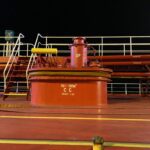
Independent tanks are self-supporting tanks that do not form a part of the ship hull and are not essential to the hull strength. They are widely used on gas carriers and lately on asphalt/bitumen tankers.
What is the cargo heating system used for asphalt/bitumen tankers?
The heating medium used for cargo heating on asphalt/bitumen tankers is thermal oil at a maximum temperature of 250C. Thermal oil is circulated from boilers fired by heavy fuel oil with a capacity of 1,200,000 kcal/h in the engine room to heating coils located inside the cargo tanks. Each boiler can independently satisfy the entire need for cargo heating.
What is the size of an asphalt/bitumen tanker vessel?

Asphalt/bitumen tankers are usually small vessels with a deadweight of 5,000 tons to 12,000 tons. The length of the world’s largest asphalt/bitumen carrier, Asphalt Splendor, is 175.46 meters and the deadweight is 37,000 tons.



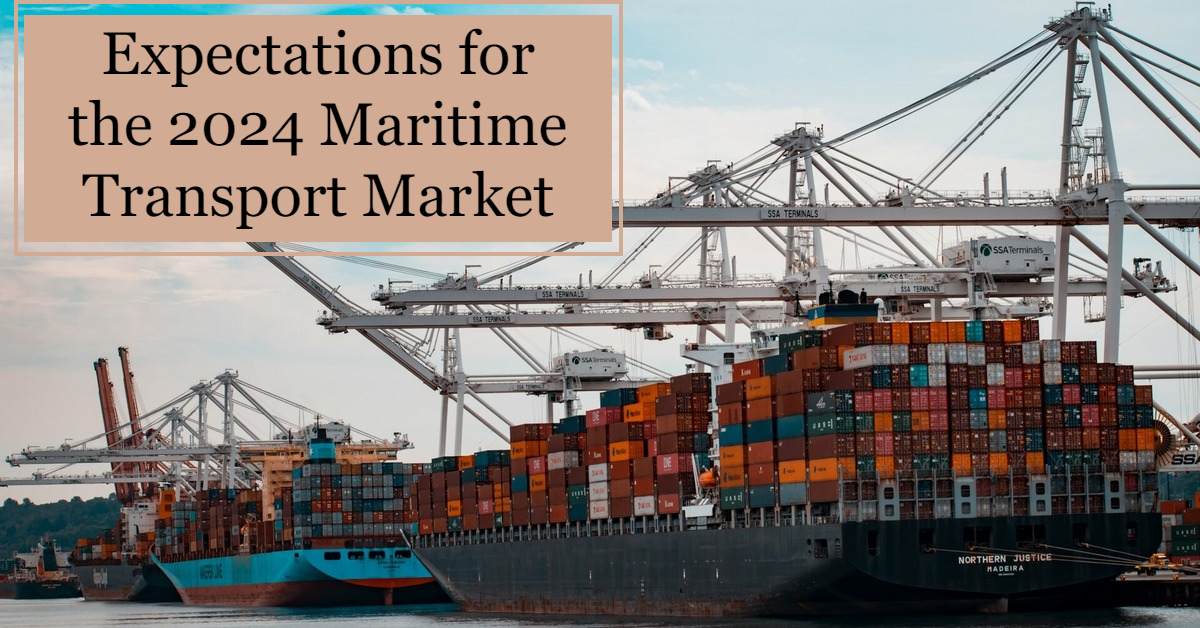
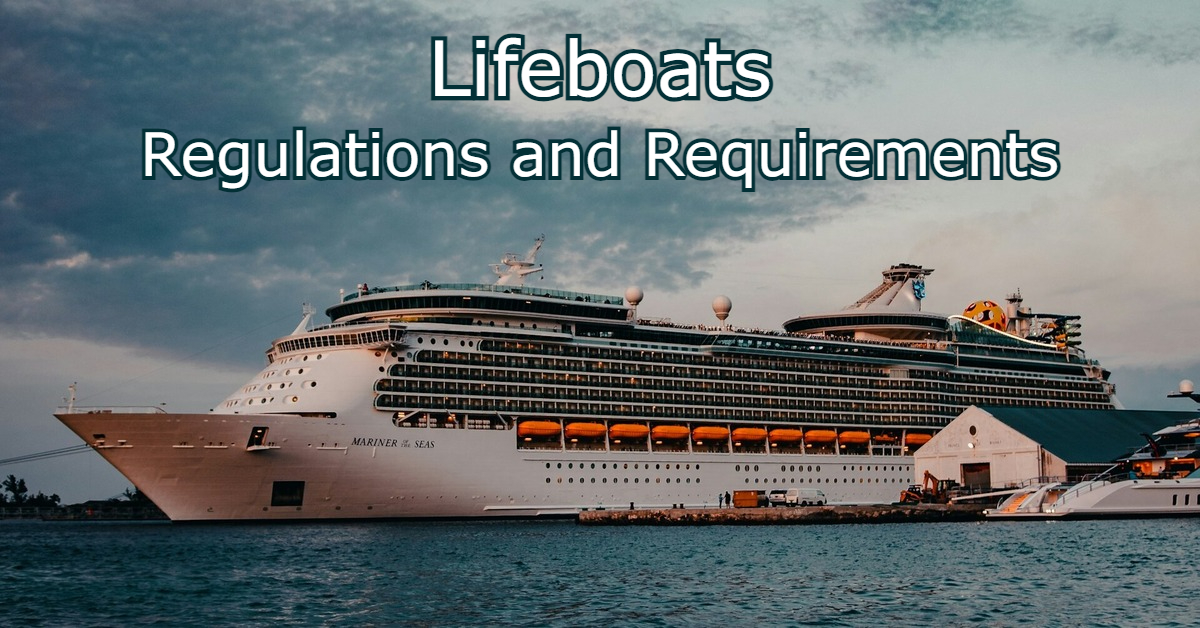
Leave a Reply